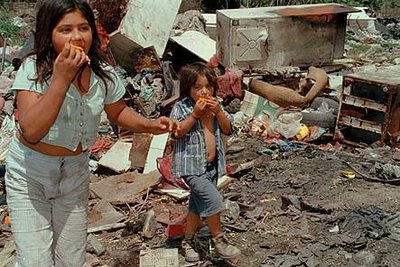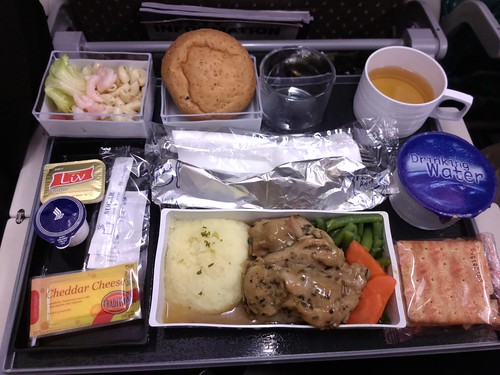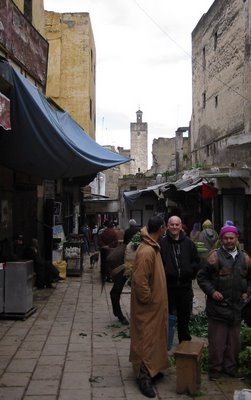Barafu Camp (4,550m) to Uhuru Peak (5,891m) to Mweka Camp (3,100m)Let me start out this posting by once again apologizing for how long it's taken to get this up. It's been a combination of being very busy myself, and asking my climbing partner to write out some details on the climb up to the summit. Regular readers will know that I personally didn't go up to the summit, as the lack of sleep on the mountain finally caught up with me the day before summit day. I'm still waiting for Colm's thought on the summit, but I wanted to get some details down none the less. Once he's had a chance to send me his thoughts, I'll add them to this post.

Day 5, as most of you know, is summit day on Kilimanjaro via the Machame Route. You'll depart camp around mid-night or 1 AM as you head up to Uhuru Peak, the highest point in Africa. The climb up takes approximately six to seven hours, and nearly all of it is in darkness, so be sure you have a good headlamp and a fresh set of batteries. Keep extra batteries inside your jacket so they'll stay warm in case you need them.
The climb up is very steep, and slow, and can be quite slick with snow lining the upper portions of the mountain, at least until you reach Stella Point. From there, the terrain continues to rise, but is not nearly as steep, and it's the altitude that becomes the main concern. Once you reach Stella Point, its approximately 45 minutes or so until you get to Uhuru Peak, the Summit of Kilimanjaro and the Roof of Africa. If everything goes according to plan, you'll arrive right around sunrise.
After a brief period on the summit, you'll begin the slow descent back to Barafu Camp. It'll take about another 3 to 4 hours to descend, but it'll be in daylight so the views will have improved. Your legs will be exhausted however, so going over the slick rocks and snow can still be quite difficult and taxing. Once ou arrive back in Barafu, you'll take a short one to two hour rest, and have some breakfast before continuing down to Mweka Camp, the final destination for Summit Day no matter which route you took up the mountain.
The descent to Mweka Camp takes approximately another three to four hours, making the total length of Summit Day in the neighborhood of 12 - 14 hours total. Certainly a long day. The descent is once again over rock scree and can be rather steep in certain areas. You'll even have to scramble over some large rocks, which would typically be quite easy, but on tired legs, it can be quite challenging. However, as you head down, you'll make good time, and the air will begin to thicken again, making it easier to breathe. By the time you stop for the day, you'll have returned to the Cloud Forest climate zone. Mweka Camp is also quite lively, loud, and active, as it is the last camp for everyone on Kili no matter which route they take to the top.
Unfortunately for me, I never had the chance to experience the summit climb. When my partern Colm left for the summit at mid-night, I had already been in the tent, WIDE AWAKE, for about five hours. I continued to lay there until his return, and all told, I was in the tent for about 12 to 13 hours that night, without a wink of sleep. That made for a very long night, but also reaffirmed that I had probably made the right decision to not go up.
Upon his return, Colm told me that it was the hardest thing he had ever done, and this is coming from a man who runs a three and a half hour marathon. While he was chatting with me about the climb and descent, he fell asleep in the doorway of our tent, and stayed there until we had breakfast. He was literally exhausted, and the descent was going to be a challenge for him, as he had already had a long day.
For me, the descent to Mweka Camp wasn't too bad. My legs were rested, and aside from being tired from not sleeping, I was feeling pretty good. The loose rock scree didn't make the descent easy, but it was more about watching my footing than anything else. By the time we were done for the day, we were making camp at approximately 10,170 feet, and finally, at long last, I would sleep. Descending back to a more resonable altitude did wonders for me, and that night I got a good solid six or seven hours of rest. Believe me, I needed it.
The following day was our last on the mountain. The final descent to the park exit. I'll post my thoughts on that either tonight or tomorrow, with a few parting comments on the climb. Again, I apologize for taking so long to get this up, and I'll add Colm's thought when he gets a chance to share them.
Update: Colm, my climbing partner on Kili, sent me his thoughts on Summit Day and his climb from Barafu Camp up to Uhuru Peak. That's him in the picture by the way. What follows is his experience in his own words, and marks the first time I've had a guest blogger on The Adventure Blog. I can't think of a better person to turn over the reigns to. So, with out further ado, here is what Colm had to say:
"On the six day Machame climb, the ascent comes at the end of the toughest day of hiking so the evening of the ascent was when I felt the most tired.
After dinner, which was almost impossible to eat, I just ate dry pasta, you return to your tent to sleep but it was impossible. There was a raging wind, a thunderstorm underneath us and sleet and hail belting into the tent. It didn’t inspire confidence for the upcoming climb.
I also took some Diamox at this point which may not have been the best idea; hard as it was to sleep with the weather, it was impossible when you have to pee every 15 seconds.
The ascent starts about midnight. I started off with two thermals and two fleeces and felt pretty comfortable, not too cold. My plan was just to follow the foot steps of my guide and not look around, this was probably a good idea as the next morning on the descent there was definitely some steep falls which I hadn’t noticed the previous night. From about midnight to 2am , I felt pretty good, I don’t think we even had a break. Weather was fine, not windy and everything was going well. It was steep but you just can’t see anything except the odd other headlight so all I focused on was the feet of my guide. I definitely started to feel bad about 3 am. It also got windy and cold at this point. I managed to take in an energy gel, it was hard to keep down but it definitely helped and the hike from 3 to 5 went ok, not easy and you really just focus on the feet in the light of your headlamp I also remember Zawadi , my guide, was polite enough to ask if it was ok to smoke whenever we had a break which was quite funny.
I don’t even recall reaching Stella point or Gilmans Point. My guide didn’t even acknowledge these points, he just kept forcing the pace. My guide was a great guy but he was tough and didn’t allow any chance for hesitation or doubt. The summit was the priority and by God, he was getting up there.
The last hour is over the ice and snow. Obviously it gets colder and gets quite slippery. I remember feeling just so exhausted but just kept going. The last 45 minutes got even harder as you had to focus on not slipping and not breaking your ass in the process.
We eventually reached the peak at 6.10am or so, I think we were the third group to reach the peak that morning. The sun was starting to rise and it really was amazingly beautiful, the colours were amazing but I have to admit it is hard to fully process everything as you are just so tired.
A you descend, I really noticed how slippery it was, I had to follow the footsteps of my guide in Indian file. You can see the ghosts of other climbers coming towards you from all routes and you do see some people in pretty bad shape.
The descent to Barafu camp is a bit nuts really, it is just this steep path of scree and you almost have to run down. It was at this point I got some AMS, I lost all co-ordination in my legs and despite feeling not too bad, I just couldn’t keep my legs moving in a co-ordinated way and kept falling over. I was like Bambi trying to ice skate. My guide had to take me under the arm so we looked like two newly weds going down the aisle as we descended. As I got lower, things did get a bit better and I was able to descent the last hour to camp without help.
As I passed out with half my body outside the tent I remember telling Kraig, something along the lines that a lot of people who do Killi do not realize the difficulty involved. I didn’t sleep very well during the climb which didn’t help and I am a reasonably strong marathon runner but Killi was definitely harder than expected.
I did a short trek in Ladakh recently but this was my first real climbing experience and as the memories of how hard Killi was begin to fade, I am already thinking of the next climb….
I would also like to acknowledge how lucky I was with my climbing partner, a great guy with huge patience. I don’t know if it was just me but altitude caused me to break wind every 10 seconds and pee at least 5 times a night which can not have been easy for my tent partner and definitely didn’t help sleep."
A huge thanks goes out to Colm for taking the time to write this up and give us his thoughts on the climb. And I can honestly say that I couldn't ask for a better person to share the experience with as well. Colm and I shared a similar sense of humor and we got along great pretty much from the moment we met. Colm, if you need someone to share the tent with you on another mountain, I'm happy to be there. I'll even bring a bigger beaker. ;)































